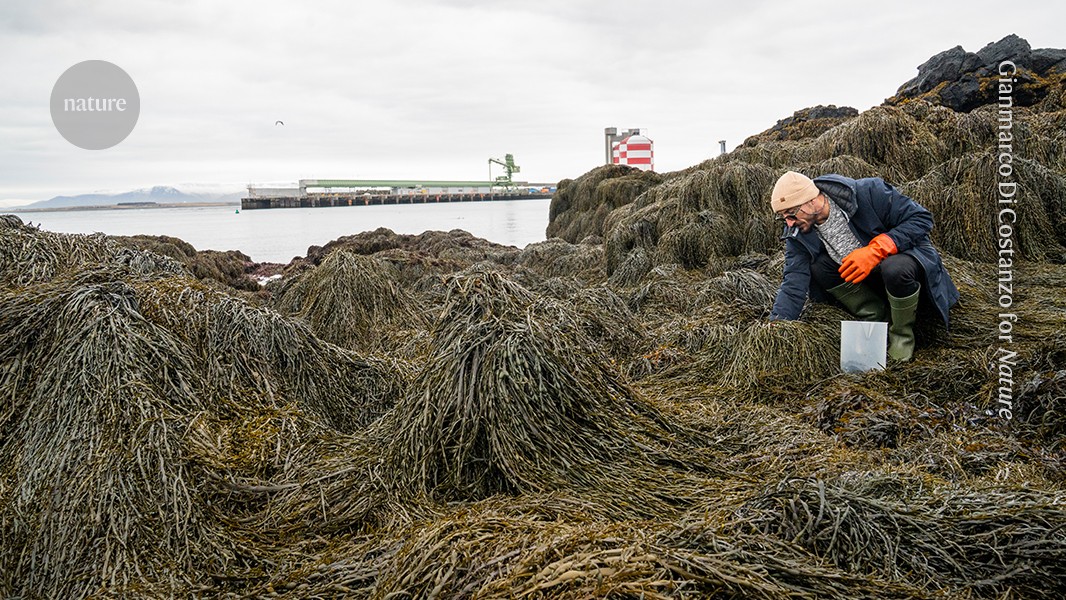I trawl coastlines to study the impacts of microplastics on marine life

Biologist Lorenzo Cozzolino examines how these tiny particles are affecting the behaviour and physiology of molluscs, crustaceans and seaweeds
“When I tell people I am a marine biologist, everybody thinks I’m swimming with dolphins and whales. In reality, I spend my time in the field collecting mussels, oysters, crabs and seaweeds to test their behavioural and physiological responses to microplastics.
In this photo, taken in October 2024 near the village of Hafnarfjörður in southwestern Iceland, I’m collecting samples of the European green crab, Carcinus maenas, from a dense bed of Ascophyllum nodosum, a seaweed. The fronds of this alga reach 0.5 to 2 metres in length, and can cover a beach.
I did my doctoral studies at the Centre of Marine Sciences at the University of Algarve in Faro, Portugal. While I wait to defend my thesis, I’m doing a postdoc at the University of Lille in France. In my research, my colleagues and I compare the impact of microplastics on genetically distinct populations of several species, including certain molluscs and crustaceans.
Enjoying our latest content?
Login or create an account to continue
- Access the most recent journalism from Nature's award-winning team
- Explore the latest features & opinion covering groundbreaking research
or
Sign in or create an account Continue with Google
Continue with Google
Nature 644, 1122 (2025)
doi: https://doi.org/10.1038/d41586-025-02644-1
This interview has been edited for length and clarity.
This story originally appeared on: Nature - Author:Josie Glausiusz

















